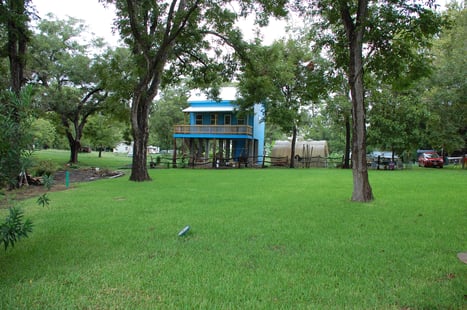
By Bob Williams
The inspiration for this post was my own backyard. Living on the banks of the Guadalupe River in Texas, I often find beautiful fallen branches and sticks from my pecan trees. Right now, these sticks are keeping me warm in my wood stove!
Even during the cold days of winter, there are plenty of activities for you and the children to explore outdoors. Why not have them pick up sticks? Sticks are great tools to use when teaching counting, measuring, and sorting. They can also be used to teach children about nature. So, bundle up, head outside, and search for sticks! Before you know it, you’ll be ready for some fun, simple math and science activities!
- Use sticks as counters: Teacher Tip: Use pruning scissors to cut sticks about 3 cm or 1 inch long.
- Observing sticks: Ask children to observe and discuss the different characteristics of each stick or branch. Those from the same tree will be similar.
- Have children sort sticks into piles by their appearance: Light or dark? smooth or rough? short, medium, or long? straight or crooked?
- Matching sticks: Use pictures to try and match each branch or stick to a tree.
- Use a ruler to measure sticks: Give children a ruler and a set of branches. Have each child guess and then measure the length of each stick.
- Teach about trees: Explain why sticks fall from trees. Discuss why this is important in the life cycle of a tree. Sticks from a tree have common characteristics. Go to a tree and collect the sticks from that tree. Find the name of the tree and look for a leaf. Put those together in a bag. Make a collection for future reference.
- Building with sticks: Use sticks to construct houses or buildings. Use clay or glue to keep the structure from falling down.
- Animals that eat sticks: Take this opportunity to talk about animals that eat trees or bark, such as termites, beavers, roly-poly bugs, and wood roaches.
- Making numbers with sticks: Cut sticks into different sizes, and then encourage the children to create numbers using bits of sticks.
- Classifying leaves: Have children collect sticks with leaves still on them. Then try to match the leaves and branches with the tree.
- Living or nonliving: Are sticks living or nonliving? Have a discussion as you collect them. Can the children collect a living stick? Do that and compare the two.
For more outdoor explorations that also teach children important math and science skills, check out my book Science Adventures from Gryphon House.
~~~

This post was contributed by Dr. Robert A. Williams, also known as Dr. Bob. Dr. Bob is the lead consultant for the Building Base Line Objectives for Children’s Knowledge and Skills in Science (BLOCKS) program at the University of Texas. He has taught in elementary, high school, and junior high school in addition to being a college professor. More books by Dr. Bob include Mudpies to Magnets, More Mudpies to Magnets, and The Preschool Scientist, and Preschool Math.
Author(s)Robert A. Williams
Ashleigh Craven
Ashleigh Craven has a decade and a half of diverse category experience from agency communications to athletic apparel to automotive to education, developing and executing communication strategies in both traditional and social media. She has supported national product launches and corporate events for the likes of Soffe, Buick, Chevrolet, Wake Forest University , Kaplan, and others. She has an BA from the University of Michigan in English and Communication Studies and an MA from Wake Forest University, where she focused her studies on argumentation and presidential rhetoric and speechwriting. She served as director of marketing for Gryphon House from 2017- 2020.


